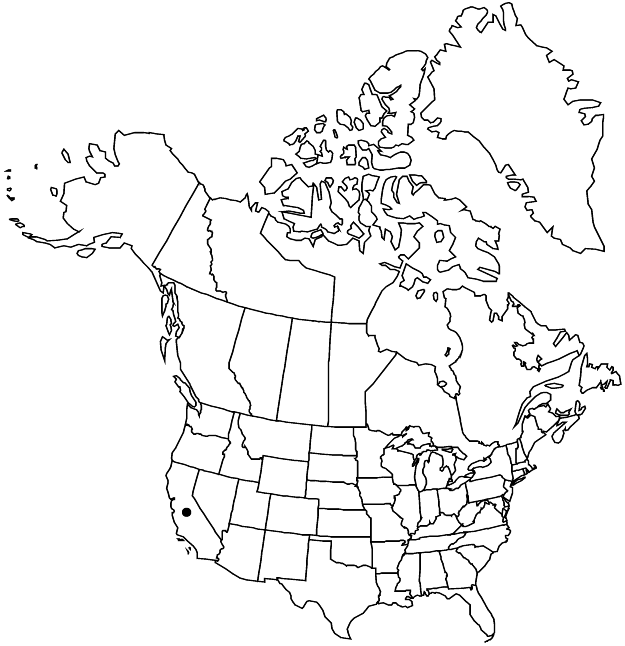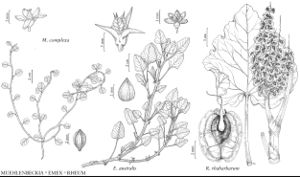Difference between revisions of "Emex australis"
Ann. Sci. Nat., Bot., sér. 2, 9: 195, plate 7. 1838.
FNA>Volume Importer |
imported>Volume Importer |
||
| Line 8: | Line 8: | ||
}} | }} | ||
|common_names=Doublegee;southern threecornerjack;spiny emex | |common_names=Doublegee;southern threecornerjack;spiny emex | ||
| + | |special_status={{Treatment/ID/Special_status | ||
| + | |code=W | ||
| + | |label=Weedy | ||
| + | }}{{Treatment/ID/Special_status | ||
| + | |code=I | ||
| + | |label=Introduced | ||
| + | }}{{Treatment/ID/Special_status | ||
| + | |code=F | ||
| + | |label=Illustrated | ||
| + | }} | ||
|basionyms= | |basionyms= | ||
|synonyms= | |synonyms= | ||
| Line 24: | Line 34: | ||
|elevation=0-200 m | |elevation=0-200 m | ||
|distribution=Calif.;Africa (Republic of South Africa);introduced in West Indies (Trinidad);Europe;Asia (India;Pakistan;Taiwan);Africa (Kenya;Madagascar;Malawi;Tanzania;Zimbabwe);Pacific Islands (Hawaii);Australia. | |distribution=Calif.;Africa (Republic of South Africa);introduced in West Indies (Trinidad);Europe;Asia (India;Pakistan;Taiwan);Africa (Kenya;Madagascar;Malawi;Tanzania;Zimbabwe);Pacific Islands (Hawaii);Australia. | ||
| + | |introduced=true | ||
|tables= | |tables= | ||
|references= | |references= | ||
| Line 46: | Line 57: | ||
|publication title=Ann. Sci. Nat., Bot., sér. | |publication title=Ann. Sci. Nat., Bot., sér. | ||
|publication year=1838 | |publication year=1838 | ||
| − | |special status= | + | |special status=Weedy;Introduced;Illustrated |
| − | |source xml=https:// | + | |source xml=https://bibilujan@bitbucket.org/aafc-mbb/fna-data-curation.git/src/bb6b7e3a7de7d3b7888a1ad48c7fd8f5c722d8d6/coarse_grained_fna_xml/V5/V5_1016.xml |
|subfamily=Polygonaceae subfam. Polygonoideae | |subfamily=Polygonaceae subfam. Polygonoideae | ||
|genus=Emex | |genus=Emex | ||
Revision as of 23:28, 27 May 2020
Plants 1–4(–6) dm. Stems prostrate, decumbent, or ascending, base often reddish, branched proximally. Leaves: ocrea loose, glabrous; petiole (0.5–)1–8(–15) cm, glabrous; blade subhastate to elliptic or ovate, 1–10 × 0.5–6 cm, base truncate to cuneate, apex obtuse to acute. Staminate flowers 1–8 per ocreate fascicle; tepals narrowly oblong to oblanceolate, 1.5–2 mm. Pistillate flowers 1–4 per ocreate fascicle; outer tepals ovate to oblong, 4–6 mm in fruit, inner tepals broadly triangular-ovate, 5–6 mm in fruit, apex mucronate. Fruiting perianths 7–9 × 9–10 mm, spines ascending or spreading, 5–10 mm, base tapering. Achenes 4–6 × 2–3 mm, shiny. 2n = 20.
Phenology: Flowering year-round.
Habitat: Disturbed sites, especially in sandy soils
Elevation: 0-200 m
Distribution

Introduced; Calif., Africa (Republic of South Africa), introduced in West Indies (Trinidad), Europe, Asia (India, Pakistan, Taiwan), Africa (Kenya, Madagascar, Malawi, Tanzania, Zimbabwe), Pacific Islands (Hawaii), Australia.
Discussion
Selected References
None.
